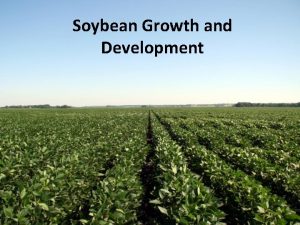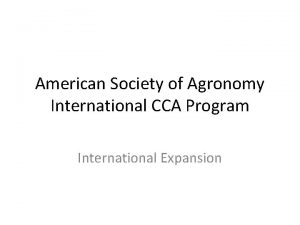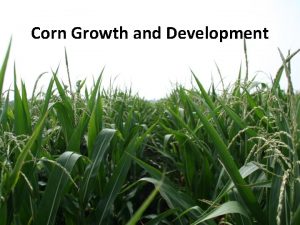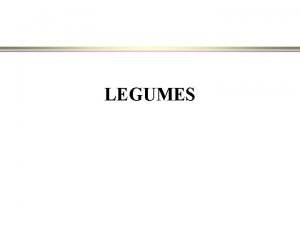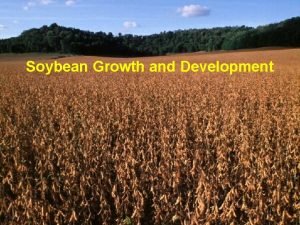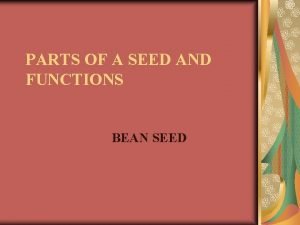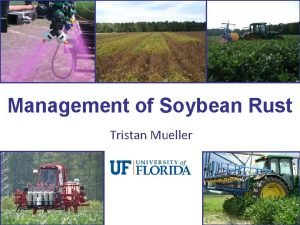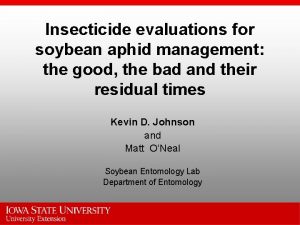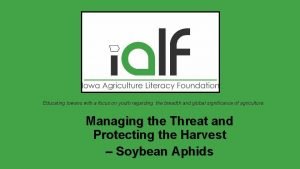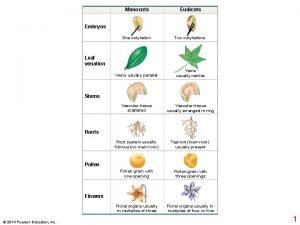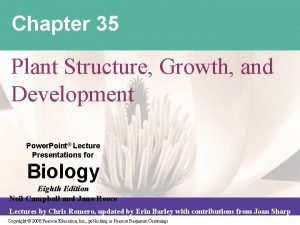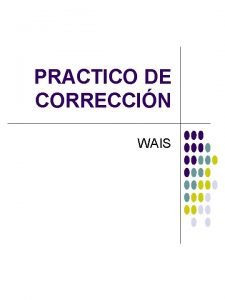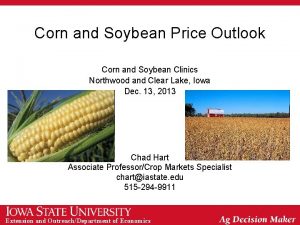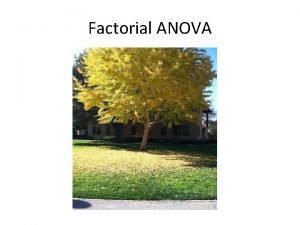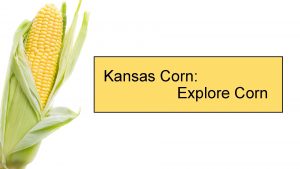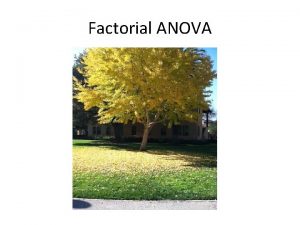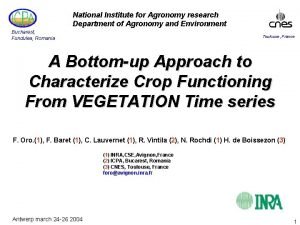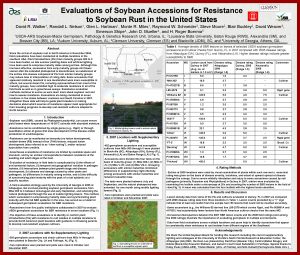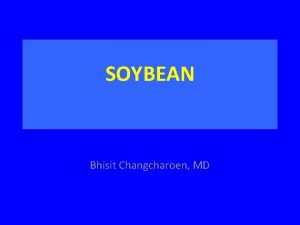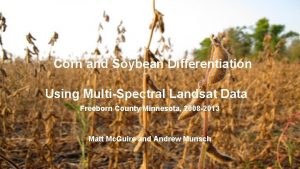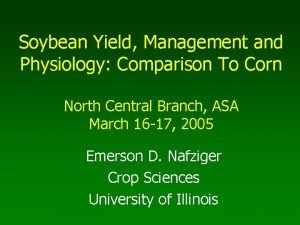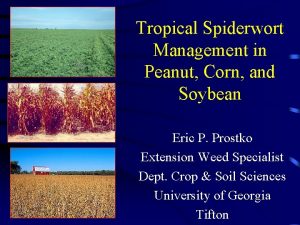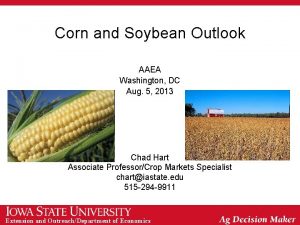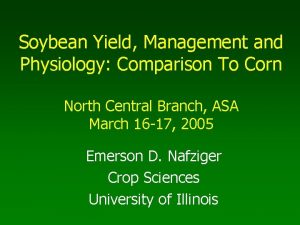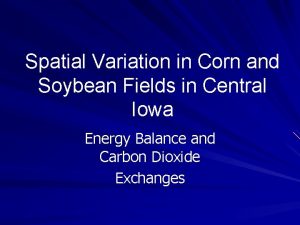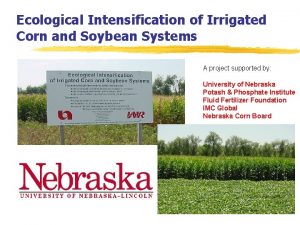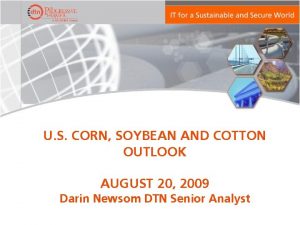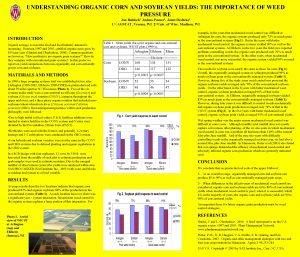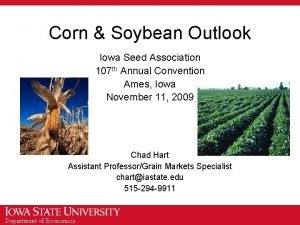Soybean Growth and Development http corn agronomy wisc

Soybean Growth and Development http: //corn. agronomy. wisc. edu Lauer © 1994 -2005 University of Wisconsin – Agronomy

Soybean yield is a complex series of interactions Management Soil type Fertility Weeds Herbicide YIELD Insects Weather Variety Diseases http: //corn. agronomy. wisc. edu SCN Lauer © 1994 -2005 University of Wisconsin – Agronomy

er sp Be ht an ig we Grain Yield d pl Number of pods Beans per pod e Se an t/b ra nc h Yield Components of Soybean Plants/Branches per area http: //corn. agronomy. wisc. edu Lauer © 1994 -2005 University of Wisconsin – Agronomy

Soybean Growth and Development Vegetative Stages Reproductive Stages ● V-Stages ● R-Stages ● VE, VC, V 1, V 2, V 3, Vn ● R 1, R 2, R 3, …R 8 ● Starts at Flowering http: //corn. agronomy. wisc. edu Lauer © 1994 -2005 University of Wisconsin – Agronomy

Soybean Morphology ● Note growing points ● Nodes are counted when the leaflet above that node is opened http: //corn. agronomy. wisc. edu Lauer © 1994 -2005 University of Wisconsin – Agronomy

SOYBEAN GERMINATION Hypocotyl Radical http: //corn. agronomy. wisc. edu Lauer © 1994 -2005 University of Wisconsin – Agronomy

Germination and Emergence Problems http: //corn. agronomy. wisc. edu Lauer © 1994 -2005 University of Wisconsin – Agronomy

Emergence Stage – VE ● 5 TO 14 DAYS AFTER PLANTING ● CHECK FOR NEED TO ROTARY HOE ● ASSESS HAIL DAMAGE http: //corn. agronomy. wisc. edu Lauer © 1994 -2005 University of Wisconsin – Agronomy

Cotyledon stage – VC ● Unifoliolate leaves have unrolled ● Leaves are opposite http: //corn. agronomy. wisc. edu Lauer © 1994 -2005 University of Wisconsin – Agronomy

First Trifoliate stage – V 1 ● One trifoliolate ● One node above the unifoliolate ● Trifoliolates are produced singularly and alternately http: //corn. agronomy. wisc. edu Lauer © 1994 -2005 University of Wisconsin – Agronomy

Second Trifoliate Stage – V 2 ● Two trifoliolates ● Nodules have been established ● Check for proper nodulation ● If absent determine cause and prepare to apply N http: //corn. agronomy. wisc. edu Lauer © 1994 -2005 University of Wisconsin – Agronomy

V 3 – Third Node ● 3 nodes above unifoliolate ● Cotyledons gone ● Axillary buds allow plants to recuperate from damage Axillary buds http: //corn. agronomy. wisc. edu Lauer © 1994 -2005 University of Wisconsin – Agronomy

V 6 Stage ● New V stages every 3 days ● 50% leaf loss=3% yield loss http: //corn. agronomy. wisc. edu Lauer © 1994 -2005 University of Wisconsin – Agronomy

Reproductive Stages and Development R 1 Beginning Bloom (flower) R 2 Full Bloom R 3 Beginning Pod R 4 Full Pod R 5 Beginning Seed R 6 Full Seed R 7 Beginning Maturity R 8 Full Maturity http: //corn. agronomy. wisc. edu Lauer © 1994 -2005 University of Wisconsin – Agronomy

Soybean Reproductive Development R 1 R 2 R 3 R 4 R 5 R 7 R 6 R 8 Seed Filling Pod Development Flowering Indeterminate Growth Vegetative Growth 0 10 20 30 40 50 Days after flowering http: //corn. agronomy. wisc. edu 60 70 Lauer © 1994 -2005 University of Wisconsin – Agronomy

Beginning Flowering – R 1 ● One open flower at any node http: //corn. agronomy. wisc. edu Lauer © 1994 -2005 University of Wisconsin – Agronomy

Midseason Management Considerations ● Soybean Diseases ● Weeds and Herbicides ● Midseason N applications http: //corn. agronomy. wisc. edu Lauer © 1994 -2005 University of Wisconsin – Agronomy

Full Flower – R 2 ● Open flower at one of the two uppermost nodes http: //corn. agronomy. wisc. edu Lauer © 1994 -2005 University of Wisconsin – Agronomy

Beginning Pod – R 3 ● Pod 3/16” long at one of the four uppermost nodes ● 60 -75% of flowers abort and never contribute to yield http: //corn. agronomy. wisc. edu Lauer © 1994 -2005 University of Wisconsin – Agronomy

Full Pod – R 4 ● Pod is ¾” long at one of the four uppermost nodes ● Beginning of critical yield determining period http: //corn. agronomy. wisc. edu Lauer © 1994 -2005 University of Wisconsin – Agronomy

Beginning Seed – R 5 ● Seed is 1/8” long in pod at one of the four uppermost nodes ● Large demand for water and nutrients ● R 5. 5 is max node #, height and leaf area http: //corn. agronomy. wisc. edu Lauer © 1994 -2005 University of Wisconsin – Agronomy

Seed and Pod Development Through the R 5 Stage http: //corn. agronomy. wisc. edu Lauer © 1994 -2005 University of Wisconsin – Agronomy

Full Seed – R 6 ● Pod containing a green seed that fills the pod cavity at one of the four uppermost nodes http: //corn. agronomy. wisc. edu Lauer © 1994 -2005 University of Wisconsin – Agronomy

Beginning Maturity – R 7 ● One pod anywhere with its mature color http: //corn. agronomy. wisc. edu Lauer © 1994 -2005 University of Wisconsin – Agronomy

Full Maturity – R 8 ● 95% of the pods have reached their mature color ● Harvestable 7 -10 days after R 8 ● Plant populations can be assessed http: //corn. agronomy. wisc. edu Lauer © 1994 -2005 University of Wisconsin – Agronomy
- Slides: 25
